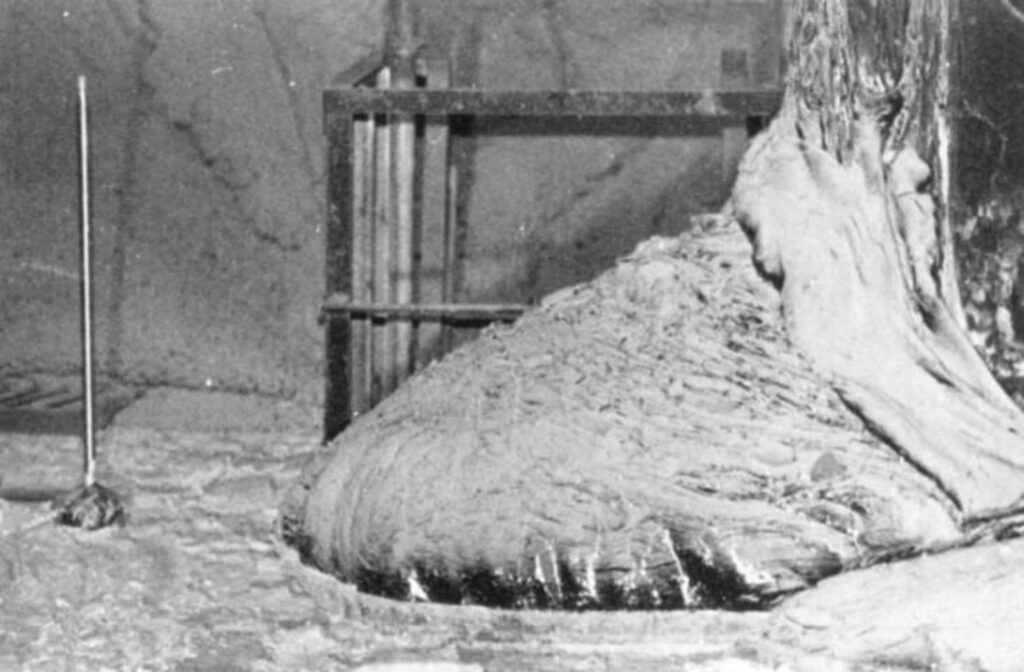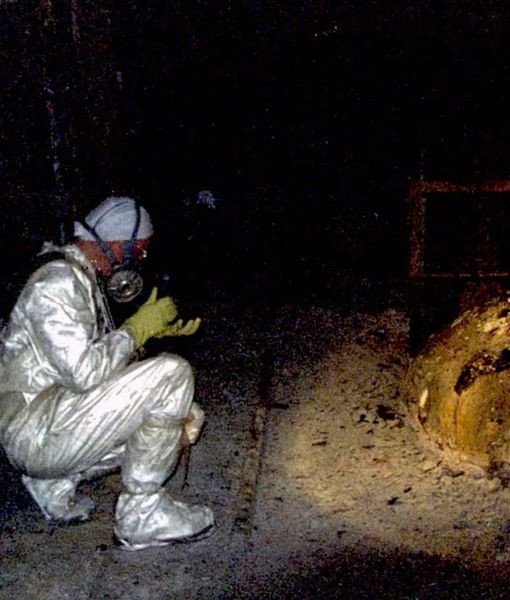In just two days, the most deadly thing on Earth can take a life.
This startling image reveals what is supposedly the most lethal object on Earth, and you would never want to come into contact with it.
When we think of the most deadly object in the world, we’ve probably all envisioned different things, and many of us have even guessed as to where it is.
The “Elephant’s Foot” is the object of concern, and it poses a serious risk.
According to the science journal Nautilus, your cells will start to bleed after just 30 seconds of being in close proximity to this object.

After four minutes in its company, you will experience fever, diarrhea, and vomiting.

You only have two days left if you stay for 300 seconds.
This hazardous item is found in a basement in Pripyat, Ukraine, which is well-known for being the location of the nuclear accident at Chernobyl almost 40 years ago.
Since then, the area where it was discovered has been called the “Elephant’s Foot of Chernobyl.”
This is due to the fact that the radioactive mass that developed beneath Chernobyl has an elephant’s wrinkly foot like structure.
This ‘foot’ is two meters long and composed of melted nuclear fuel, sand, and concrete.
Over time, radiation levels have dropped, but they have done so gradually.
It took ten years to take pictures of the molten mass because of the extreme nuclear fallout.
You could hold the thing for up to an hour before it turned lethal at the time the picture below was shot.
But in 1986, radiation measurements at the “foot” showed 10,000 roentgens per hour.
Anyone standing three feet away from it for three hundred seconds would be exposed to a fatal dosage of radiation at this level.
It is anticipated that the unsettling item in the basement will continue to be extremely radioactive for tens of thousands of years.
One of the most dangerous items at the Chernobyl site is a claw that was used to handle the materials—including graphite—that were released from reactor four during the accident.
This abandoned claw is located deep into the forest, and it releases over 950 uSv of radiation per day, making any contact with it very risky.
According to Australian archaeologist Robert Maxwell, the claw was vital during the catastrophe’s aftermath.
“The three rooftops alongside the exploded reactor four were, at the time, the most lethally dangerous places on earth,” he said in an interview with news.com.au.
“One of the rooftops was measuring in the tens of thousands of roentgen, which was the measurement of radioactivity back then.”
“When reactor four of Chernobyl exploded, it liberated the lid of the reactor vessel. This 6-10 tonne concrete roof was blown into the air and then landed vertically into the hole.”
“All of the control rods, the graphite, the fuel rods and everything else blew out of the reactor and landed on the rooftops nearby.”
“So imagine someone trying to stand on a rooftop that was so radioactive that it could give you such acute radiation sickness that you basically cook yourself and die.”
“So this Claw was deeply involved in all the intensely radioactive material as it moved the material back into the core.”
“To say the Claw is highly radioactive and dangerous is not an exaggeration.”
